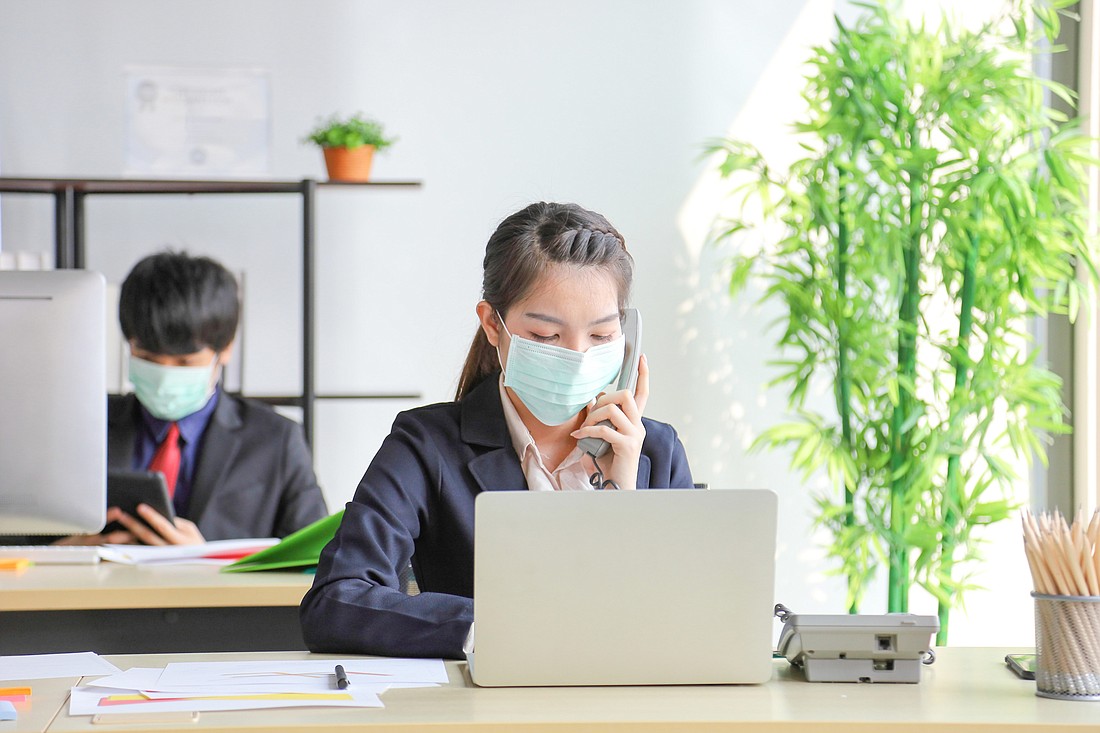
By Kirsten Doolittle, JBA Labor and Employment Committee Chair
Over the past eight weeks, we have been profoundly impacted by COVID-19 and the uncertainties it created. In addition to concerns about the health of our families and personal financial stability, most of us experienced the added worry of business disruption as we transitioned into working remotely.
While most law firms were exempt from Mayor Lenny Curry’s work-from-home order, many firms directed their employees to work from home.
And work from home they did.
Attorneys juggled client deadlines while home-schooling their children. People frantically searched for the mute button so clients would not hear their dogs barking. Everyone attends hours of Zoom and Microsoft Team meetings. Partners researched and applied for financial relief programs and other emergency fund opportunities.
Times have been uncertain, and everyone has done their best.
With the expiration of the work-from-home order, many firms are inviting employees back to the office. As employers, firms have a duty to provide their employees a healthy and safe workplace. With constantly evolving guidance from the Centers for Disease Control and Prevention, Occupational Safety Health Act and the Equal Employment Opportunity Commission, that task seems daunting.
While you can devise a complicated structure, all sources agree on the basic protections that should be deployed as businesses come back to pre-COVID-19 operation.
These are not unfamiliar concepts, but some thought should be given to adapting them to any given work environment:
Thin the crowd
Consider allowing employees to continue working from home. The CDC has made clear the best way to prevent communal spread is through telecommuting and social distancing.
If that is not possible, schedule employees to work alternating shifts so that not all employees are present at the same time. Space workstations at least 6 feet apart and consider partitions for employees who share space.
Screen employees
In its guidance, the CDC stated, “employers should measure the employee’s temperature and assess symptoms prior to them starting work. Ideally, temperature checks should happen before the individual enters the facility.”
Upon arrival, direct employees to report to a designated private location where a screener standing 6 feet away performs a visual inspection and asks the employee to confirm that their temperature is less than 100.4 degrees and that they are not experiencing fever or chills, a cough or sore throat.
If possible, use multiple screening entrances so that no lines form upon entry. Screeners do not need to wear personal protective equipment if they are socially distanced.
If an employer opts to administer temperature readings on its own, it should consult the CDC’s specific guidance for doing so. The EEOC has affirmed that during a pandemic, it is permissible to screen employees in this manner, provided that all information collected is kept as a confidential medical record that meets federal requirements.
Ask about health
If an employee calls in sick, ask the employee if they have COVID-19 symptoms, including fever, cough, chills, sore throat and shortness of breath. As more symptoms emerge, consult the CDC to determine whether it would be appropriate to add to the list. This information also must be kept as a confidential medical record.
Requiring personal protection
Employers may require employees to wear PPE during a pandemic. In its May 3 guidance, the CDC stated that unless employees work with the public, it “does not recommend the use of PPE in workplaces where it is not routinely recommended.” Instead, the CDC recommended that employers use social distancing, telecommuting and alternative schedules, as those strategies are more effective at preventing exposures than PPE, according to the CDC.
Communal and individual spaces
Limit the occupancy of the break room, copy room and restrooms to one employee at a time. Provide disinfectant spray and wipes in communal spaces and require employees to sanitize any surface touched before exiting the space.
At the end of each day, have employees sanitize their desk, keyboard, mouse, telephone, doorknob and light switch.
Communicate with employees
Employers may not legally ask employees who do not have influenza symptoms to disclose whether they have a medical condition that makes them more vulnerable to influenza complications.
If an employee volunteers this information, however, the employer should keep the information confidential and may ask the employee what type of assistance they need. Teleworking is a commonly used reasonable accommodation.
Employers should tell employees if they have been exposed to someone who exhibited COVID-19-related symptoms or tested positive for COVID-19, but should not disclose the identity of the individual. Employers may disclose the name of an employee that it learns has COVID-19 to a public health agency.
I am reminded over these past weeks that now is a time to extend an extra measure of grace to others and ourselves. While we may wish for a swift return to normalcy, that path is daunting and even perilous, for many employees.
As employers, we have both a legal and moral obligation to keep that in mind as we move forward.
Kirsten Doolittle is managing shareholder of Aequitas Counsel, focusing on Title IX investigations and labor and employment law.